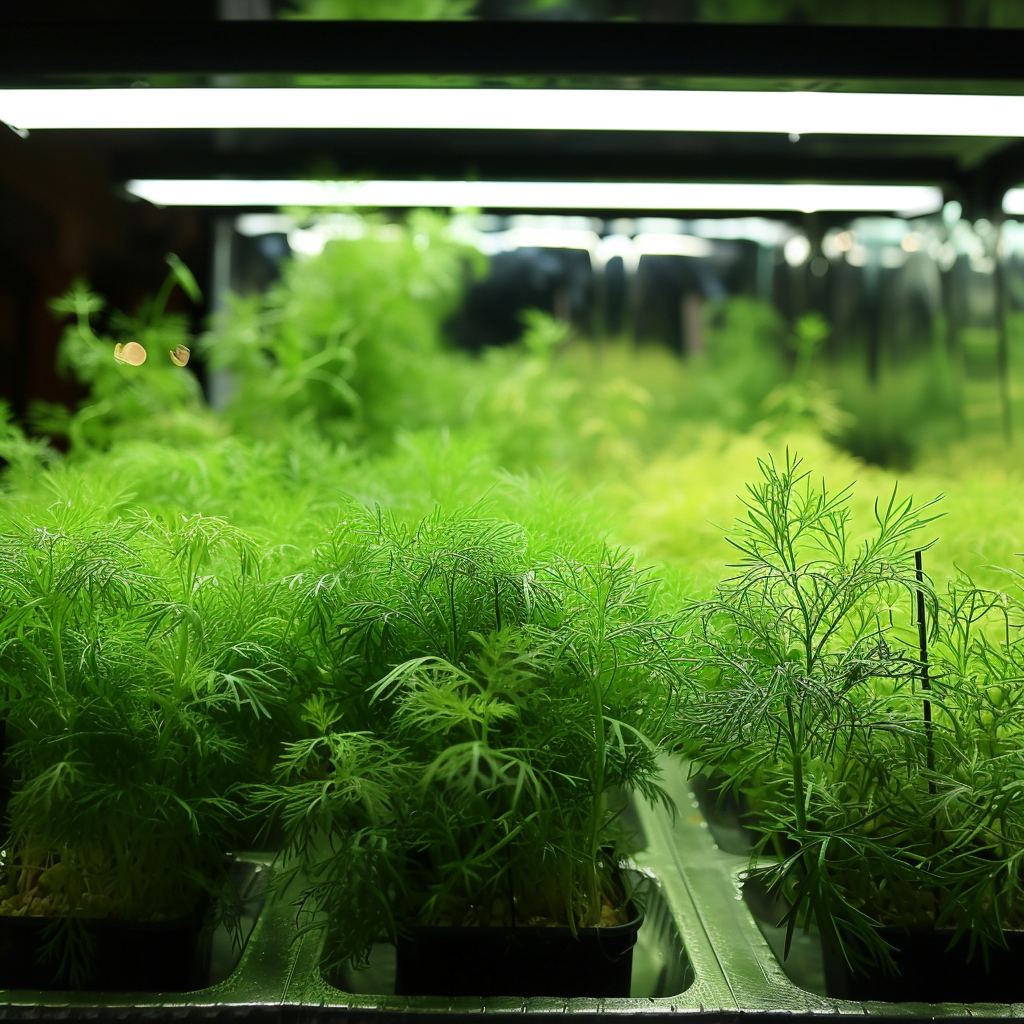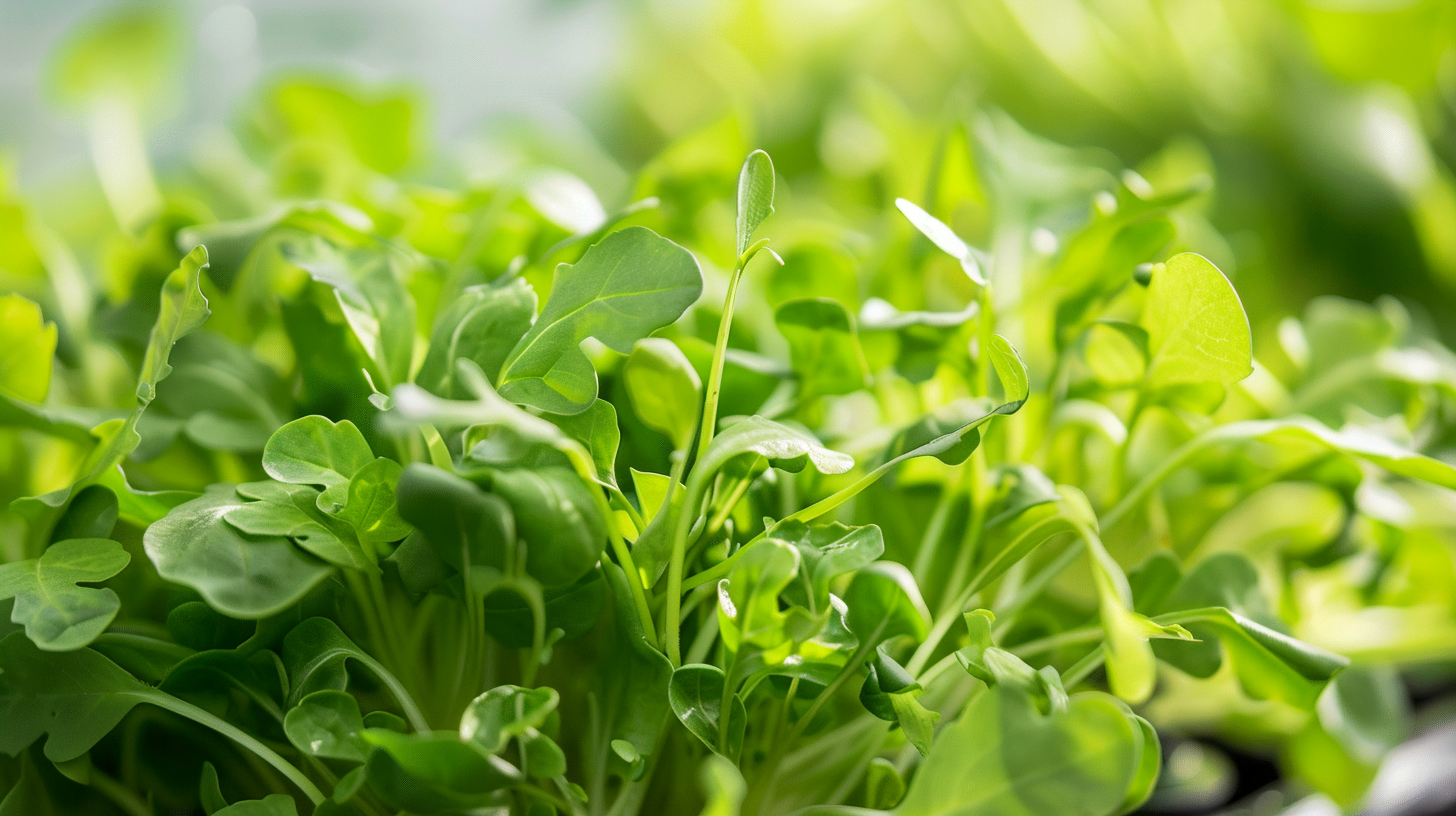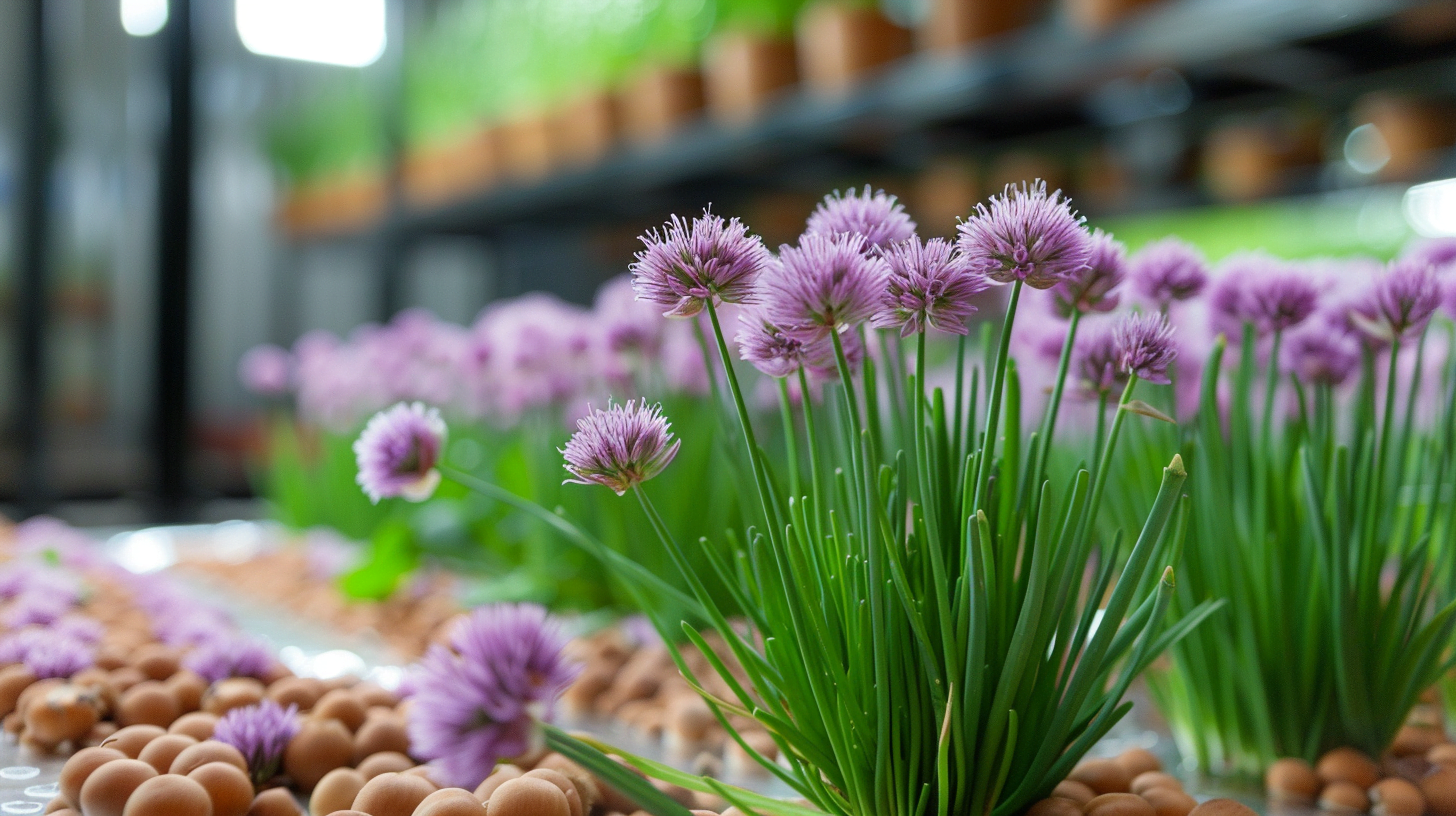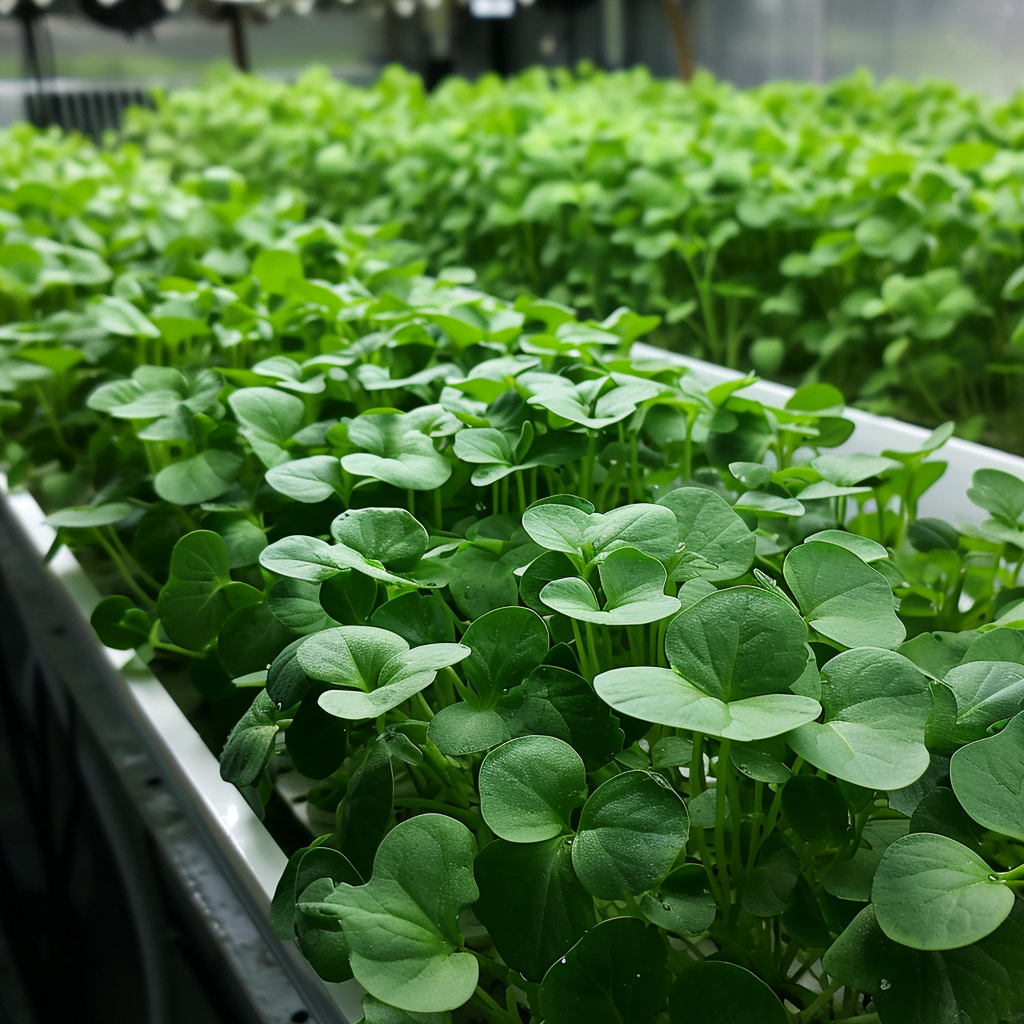Herb gardeners often wonder, “can I grow dill hydroponically?” The answer is a resounding yes! Dill is an ideal herb to grow hydroponically, producing fast harvests and high yields in a small space. This comprehensive guide will cover everything you need to know about successfully growing dill hydroponically.
Hydroponics is the method of cultivating plants in a nutrient-rich water solution rather than soil. The plants’ roots are suspended in the liquid, allowing them to absorb the nutrients and oxygen they need directly from the water. Hydroponics allows growers to precisely control nutrients, water, light, humidity, and other factors to optimize plant growth.
Both curly leaf and fernleaf varieties of dill thrive when grown hydroponically. Dill’s quick maturation time and vigorous growth make it perfect for hydroponic herb gardens. Maintaining optimal humidity, temperature, oxygenation and nutrients allows dill to flourish in hydroponic systems.
The benefits of growing dill hydroponically include faster harvests, higher yields, and the ability to grow indoors year-round. Hydroponic dill matures 2-3 weeks faster than dill grown in soil. Growers can produce more dill in a limited space by optimizing hydroponic parameters. By providing ideal growing conditions, tender herbs like dill can be grown in any season without concern for outdoor conditions.
This guide will cover everything you need to know about successfully growing dill hydroponically, from choosing the best system and nutrients to maintenance tips and troubleshooting. You’ll learn proper techniques to maximize dill yields hydroponically. Follow along to discover the answer to “can I grow dill hydroponically?” and how to implement this innovative growing method.
Benefits of growing dill hydroponically include:
- Faster harvest times – dill matures much quicker with constant moisture and nutrients
- Higher yields in a smaller footprint – grow more dill in a limited space
- Avoids soil-borne diseases and pests
- Precise control over nutrients and water delivery
- Ability to grow indoors year-round in controlled conditions
Can Dill Be Grown Hydroponically?
Dill is an excellent candidate for hydroponic growing systems. This versatile herb requires a consistently moist and nutrient-rich environment, which hydroponics provides. Dill’s quick growth and hardiness make it ideal for both small and large hydroponic installations.
Both major varieties of dill – Anethum graveolens or curly leaf dill and Anethum graveolens var. fernleaf – thrive under hydroponic conditions. The key factors dill needs to prosper hydroponically are proper oxygenation, nutrients, humidity, warmth and light exposure. When these parameters are controlled, dill will flourish and produce abundantly in a hydroponic system.
Hydroponically grown dill can be ready to harvest up to 2-3 weeks earlier than dill grown in soil. The consistent moisture, nutrients and ideal conditions speed up growth. Plus, in soil dill tends to bolt and flower more quickly under stressful conditions. Hydroponics avoids these issues for a longer harvest window.
Choosing the Right Hydroponic System for Dill
Several types of hydroponic systems can successfully grow dill, including:
- Deep Water Culture (DWC) – Plants grow with roots suspended in an oxygenated nutrient solution. Simple, inexpensive system.
- NFT (Nutrient Film Technique) – Shallow stream of nutrient solution recirculates past plant roots. Requires less water.
- Ebb & Flow/Flood & Drain – Plants in grow tray flooded with solution, then drained periodically. Allows for vertical stacking.
- Wick System – Nutrient solution wicked up to plant roots via capillary action. Passive system, no power required.
- Aeroponics – Plant roots misted with nutrient solution. Maximizes oxygen. Higher tech, best for large operations.
- Drip System – Nutrient solution dripped or misted over plant roots. Simple, low cost.
The top recommended hydroponic systems for dill are DWC, NFT, and Ebb & Flow. These provide the right balance of moisture, oxygenation and vertical space needed for dill to thrive.
Deep water culture offers a simple, inexpensive setup. Dill roots have constant access to nutrient solution while air stones provide oxygenation. For larger yields, a multi-bucket or trough DWC system is recommended.
NFT systems require a bit more technical know-how but deliver excellent results. A shallow stream of nutrient solution constantly flows past the dill roots. Oxygenation occurs as the solution flows and splashes.
Flood and drain systems alternate wet and dry cycles. An automated timer floods the grow tray with nutrient solution then drains it after a set period. The roots get ample moisture but also periods of increased oxygen as the tray drains. This allows stacking grow trays vertically for higher yields.
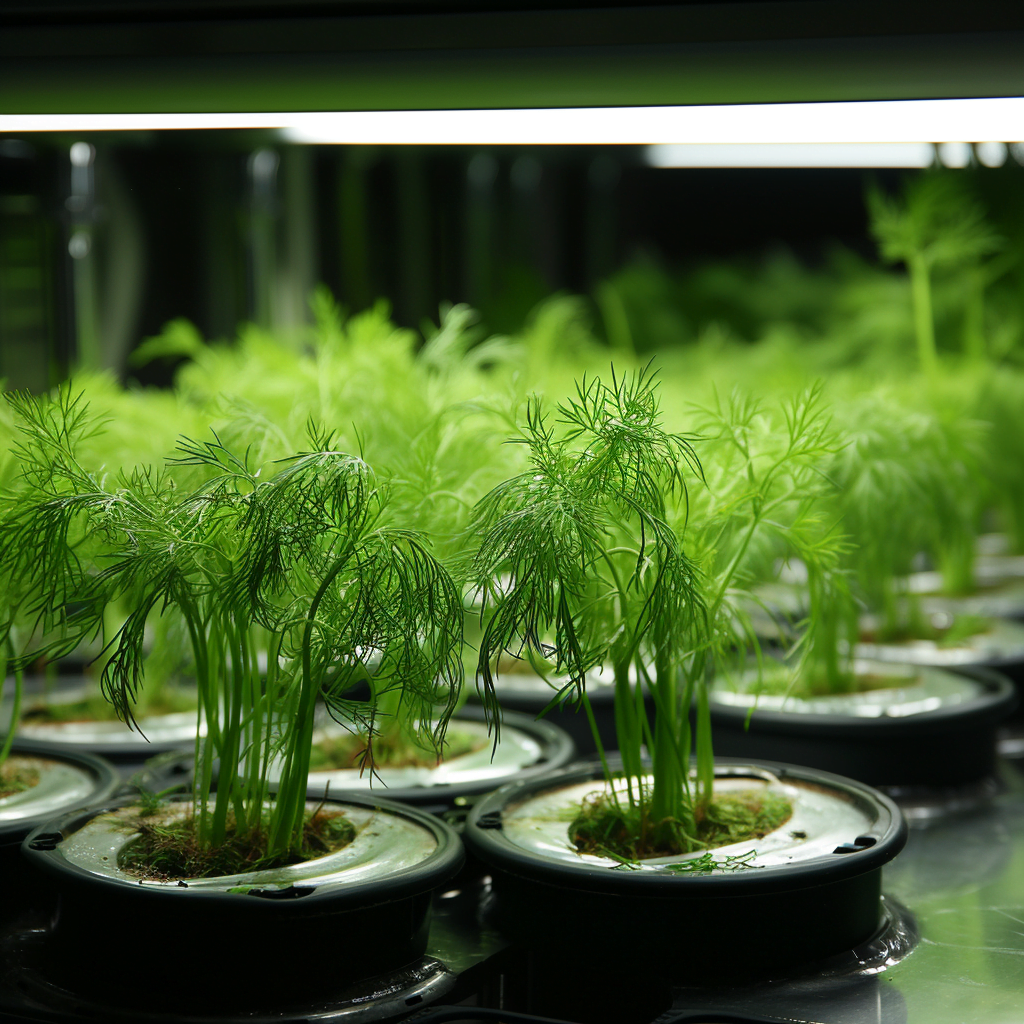
Nutrient Solutions for Growing Dill Hydroponically
Most standard hydroponic nutrient solutions will work well for dill. Look for a complete two-part formula made for herbs and vegetables. The nutrient solution should provide a blend of primary macro-nutrients (nitrogen, phosphorus, potassium) along with secondary nutrients and micronutrients.
The three main macronutrients dill needs are:
- Nitrogen (N) – For leafy growth and chlorophyll production
- Phosphorus (P) – Aids root development and flowering
- Potassium (K) – Important for water regulation, root health
Secondary nutrients include calcium, magnesium and sulfur. Micronutrients are boron, copper, iron, manganese, zinc and molybdenum. A good hydroponic nutrient formula will contain all these in optimal proportions.
Maintain the nutrient reservoir for dill at an EC level of 1.2 to 1.6 and a pH between 6.5-7.0 for optimal intake and plant growth. Supplementing the formula with additional calcium and magnesium is also beneficial for dill growth and flavor.
Monitoring pH and EC (electrical conductivity) levels regularly is key. Test the reservoir at least 2-3 times per week and adjust as needed to stay in the optimal ranges. Watch closely in early growth stages as seedlings are more sensitive.
As plants grow, increase the EC slightly within the recommended range. Additional nutrients are needed to support heavier fruiting and flowering. Adjusting nutrient strength through the growth cycle prevents deficiencies and burning.
Dill’s Ideal Growing Conditions
To maximize dill’s growth and flavor when grown hydroponically, maintain these optimal growing conditions:
- Temperature – 65-70°F during the day, and at least 55°F at night. Dill thrives in relatively cool conditions. Avoid excessive heat.
- Light – Dill needs at least 6 hours of direct sunlight or 14-16 hours under grow lights per day. High intensity discharge or full spectrum LED lights work best.
- Humidity – Maintain humidity levels around 70% for healthy dill growth. Use humidifiers or misters to supplement low ambient humidity.
- pH – The nutrient solution should be kept at a neutral to slightly alkaline pH between 6.5-7.0. Monitor and adjust with pH Up/Down solutions as needed.
- Aeration – Maintain high levels of oxygenation in the root zone to prevent root rot. Add air stones, pumps or ventilation.
Troubleshooting Growing Conditions for Dill
- Stunted growth – Increase nutrient strength or temperature
- Flowering too early – Lower nutrients, increase daylight hours
- Leggy plants – Improve light intensity or exposure
- Yellowing leaves – Check pH and boost nutrients
- Wilting – Increase humidity and solution oxygen levels
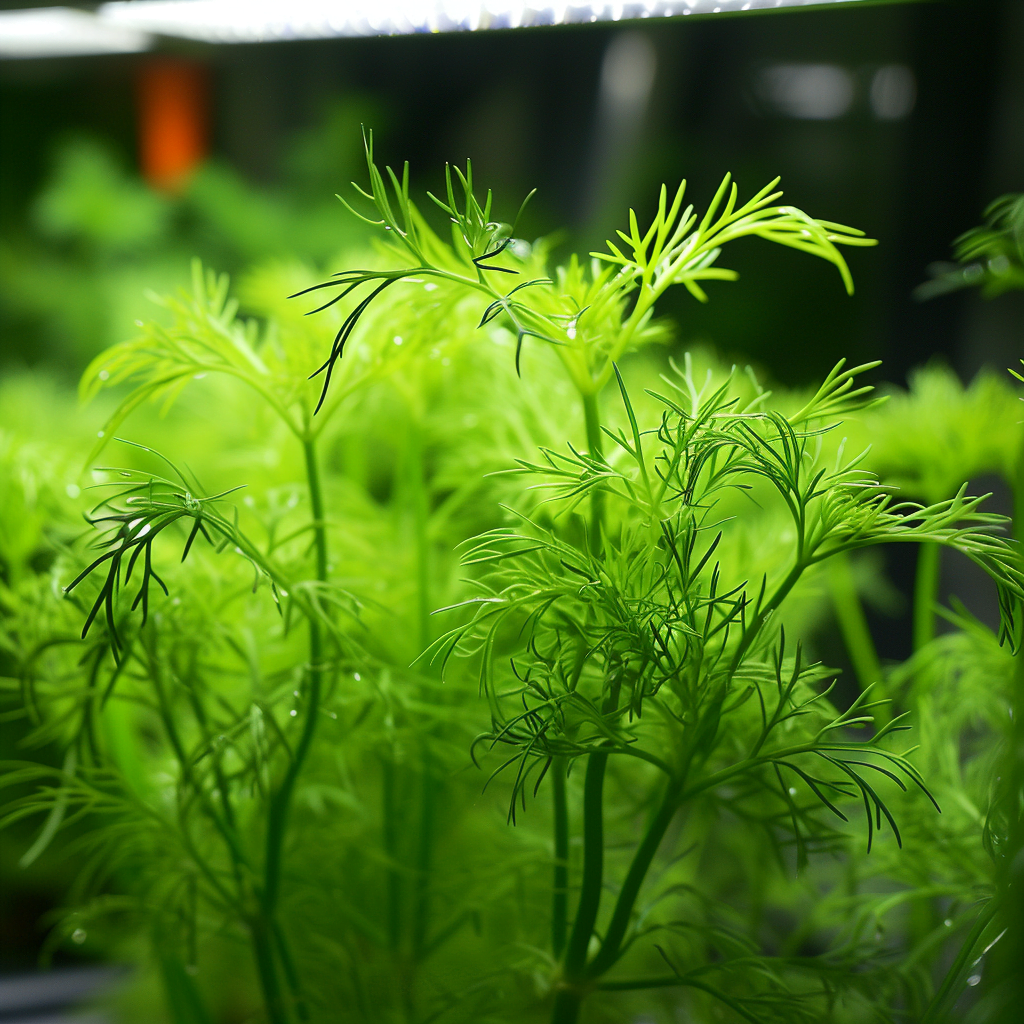
Starting Dill Hydroponically
Dill can be started from seed or transplanted as seedlings into a hydroponic system. If starting from seed, plant 4-6 seeds in 2″ net cups filled with a starter plug or hydroton clay pebbles. Thin down to the 1-2 strongest seedlings. Allow transplants to establish roots over 7-10 days before transferring into the final hydroponic setup.
Seedlings or transplants should be spaced 12-16 inches apart in the hydroponic system. Place seedlings in net cups or pots filled with a grow media like hydroton, perlite or vermiculite. Make sure the roots are suspended and can access the nutrient solution.
Let seedlings adapt to the new conditions for a few days by running a mild nutrient solution through the system. Slowly increase to full strength over 7-10 days. This hardening off process prevents shock and encourages healthy root growth.
Consider using seed germination mats or propagation heat mats to boost germination rates and speed early growth. Maintaining optimal temperatures in this stage is key.
Caring for Dill in a Hydroponic System
Caring for dill in hydroponics involves monitoring the nutrient solution, adjusting parameters as needed, and basic plant maintenance:
- Check nutrient levels and pH 2-3 times per week. Add nutrients and adjust pH to maintain optimal ranges.
- Watch for signs of deficiencies like yellowing leaves and address with nutrient adjustments.
- Keep oxygenation and circulation high – add air stones or pumps to prevent root rot.
- Support tall, top-heavy plants with trellising to prevent falling over. Use plant ties or netting.
- Prune leaves for optimal light exposure and air flow. But don’t overprune.
- Control pests like aphids with beneficial insects if they appear.
- Clean equipment and reservoir regularly to prevent algae and bacteria.
Troubleshooting Common Dill Growing Issues
- Flowers and seeds too early – Lower nutrients, increase light hours
- Leggy growth – Improve light exposure, use fans for air movement
- Tip burn – Check pH levels, reduce nutrients
- Slow growth – Raise temperature, increase nutrients
- Wilting – Raise humidity, check for root issues
Harvesting and Reseeding Dill
Dill leaves can be harvested once the plants reach 6-8 inches tall by cutting stems or picking leaves as needed. For a continual harvest, stagger planting times every 2-3 weeks.
Pick leaves early in the morning for best flavor. Choose leaves from the outside of the plant, not the innermost ones. About 2/3 of leaves can be harvested while leaving the inner 1/3 for photosynthesis.
Allow some dill plants to flower and drop seeds for reseeding future plantings. Dill seeds can be harvested by cutting off flower heads when the seeds turn brown. Place the flower heads upside down in a paper bag and dry for 1-2 weeks. Then break apart the flower heads to separate and collect the dill seeds.
Tips for Maximizing Dill Harvests
- Stagger planting dates for a continuous supply
- Harvest leaves early and often, let some plants bolt
- Pick leaves first thing in the morning
- Use sharp shears for clean cuts
- Don’t overharvest – leave inner leaves
- Allow reseeding from flowers
Troubleshooting Common Hydroponic Dill Problems
Growing dill hydroponically eliminates many issues with pests, diseases and environmental stresses. But occasional problems can still arise. Here are some common issues and how to address them:
- Slow growth – Increase temperature, nutrients, or light exposure to optimal levels
- Leggy plants – Improve light intensity and exposure, use fans to strengthen stems
- Wilting – Check for root rot and increase oxygenation; increase humidity
- Tip burn – Reduce nutrient levels, maintain ideal pH range
- Flowers and seeds too early – Extend daylight hours to delay flowering
- Nutrient deficiencies – Identify deficiency based on symptoms, increase those nutrients
- Algae or bacteria in system – Clean/disinfect equipment, change nutrient solution, use H2O2
- Clogged irrigation – Flush lines with fresh water, use hydroguard, improve filtration
- Pests like aphids – Release ladybugs or lacewings, use insecticidal soap spray
- Powdery mildew – Improve air flow, reduce humidity, treat with fungicides
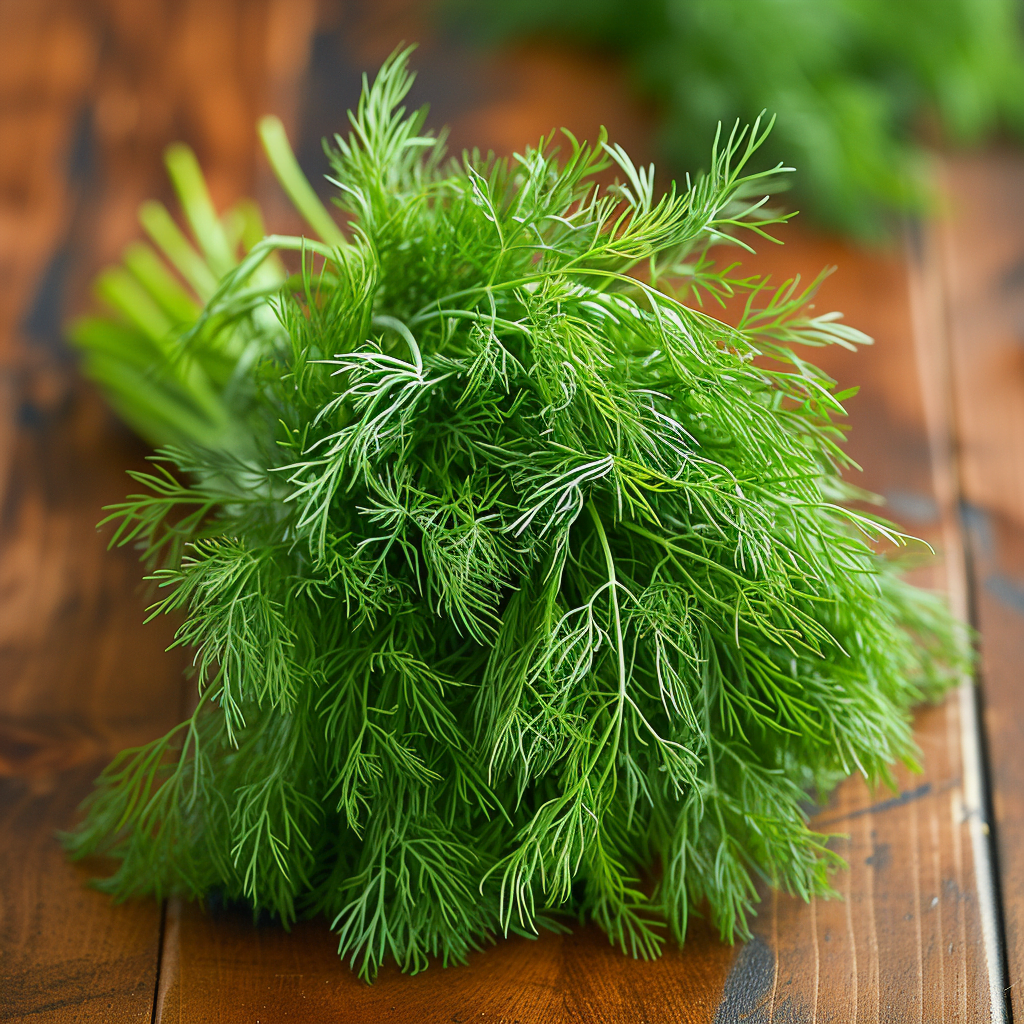
Maximizing Space Efficiency with Dill
One of the advantages of hydroponics is the ability to maximize yields in a limited space. Here are some techniques to optimize space when growing dill hydroponically:
- Use vertical systems like towers or stacked layers for vertical gardening
- Place pots/net cups close together at the recommended spacing
- Train plants upwards with trellises for vertical growth
- Use leaf pruning strategies to allow closer spacing
- Stagger planting times to overlap harvests in one area
- Optimize lighting layout for even coverage over all plants
- Select smaller, compact dill varieties suitable for high density planting
With the right hydroponic setup and cultivars, dill yields per square foot can surpass those of soil gardening. Take advantage of the flexibility hydroponics offers for intensive herb production.
Scaling Up a Commercial Hydroponic Dill Operation
For large-scale commercial dill production, a properly engineered hydroponic greenhouse provides maximum control and efficient harvesting. Key elements include:
- Hydroponic system selection – NFT, Ebb & Flow offer best scalability
- Robust framing, ventilation, climate control systems
- Automated, centralized monitoring of pH, EC, temperature
- Supplemental lighting for year-round consistent growth
- Integrated pest management and biosecurity
- Harvest-assist infrastructure – conveyors, platforms, equipment
- Processing and packing facilities on-site
Leveraging automation and data systems allows large hydroponic farms to precisely dial in conditions, maximize yields, and lower labor costs per unit of production.
Conclusion
Growing dill hydroponically allows herb gardeners to maximize yields in a small space. With the right hydroponic system, nutrient solution, and growing conditions, dill can thrive indoors to produce bountiful harvests year-round. The versatility, hardiness and rapid growth of dill make it an excellent choice for hydroponic herb gardens.
Whether you’re a small-scale hobbyist or commercial grower, hydroponics unlocks dill’s full potential. Implement the tips and best practices outlined here to get the most out of growing dill hydroponically.
